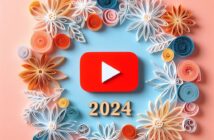Storytelling is more than an art—it’s a strategic tool that can captivate audiences, build brand loyalty, and drive engagement. A strategic approach, coupled with the right set of tools, can significantly elevate the impact of your storytelling. Here we delve into the essential tools across different phases of content strategy that can transform ordinary content into compelling stories.
Frameworks to Shape Your Narrative
Every compelling story needs a solid structure. Content frameworks are the backbone of effective storytelling. They help in organizing thoughts and ensuring your content aligns with your brand voice and goals. Tools like the Hero’s Journey or the Three-Act Structure offer classic narrative frameworks that can be adapted to suit any content type, from blog posts to video scripts.
Auditing and Analysis for Insightful Storytelling
Understanding what works and what doesn’t is crucial for crafting engaging content. Tools like Google Analytics and SEMrush provide insights into how your audience interacts with your content. These tools can help identify popular topics, gauge engagement levels, and reveal areas for improvement. Regular content audits allow you to refine your strategy and ensure your stories resonate with your audience.
Research and Ideation for Fresh Perspectives
Great stories begin with great ideas. Tools like BuzzSumo and AnswerThePublic enable you to tap into current trends and audience queries, sparking ideas that are both relevant and engaging. Leveraging these tools for research and ideation helps in creating content that not only tells a story but also answers the audience’s most pressing questions.
Crafting and Refining Your Story
The creation and editing phase is where your story comes to life. Writing tools like Grammarly and Hemingway Editor ensure your content is clear, concise, and grammatically sound. For visual storytelling, tools like Canva and Adobe Spark provide user-friendly interfaces to create eye-catching graphics and videos that complement your narrative.
Distributing and Promoting Your Tale
A great story deserves a great audience. Tools like Hootsuite or Buffer streamline the process of scheduling and posting content across various social media platforms. Email marketing platforms like Mailchimp can help disseminate your story to a wider audience, ensuring it reaches those most interested in hearing it.
Measuring Success and Optimizing Future Stories
Finally, the cycle of storytelling doesn’t end with distribution. Tools such as Google Analytics, Moz, and HubSpot offer comprehensive metrics to measure the impact of your stories. These insights are invaluable for optimizing future content, ensuring each story you tell is more effective than the last.
In Conclusion: The Symphony of Storytelling and Strategy
In the digital age, storytelling is a symphony where strategy and creativity converge. It’s about weaving narratives that not only captivate but also connect on a deeper level with your audience. By leveraging these tools across different stages of content strategy, you can transform your storytelling from a mere marketing tactic into a powerful tool for engagement and brand growth.




